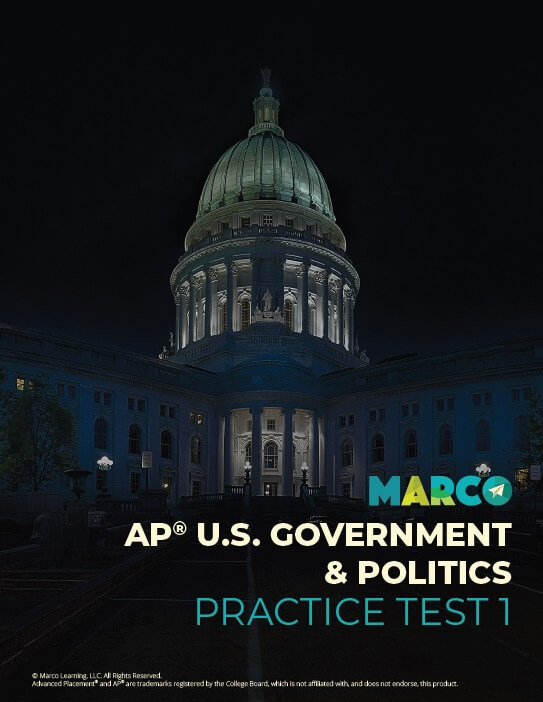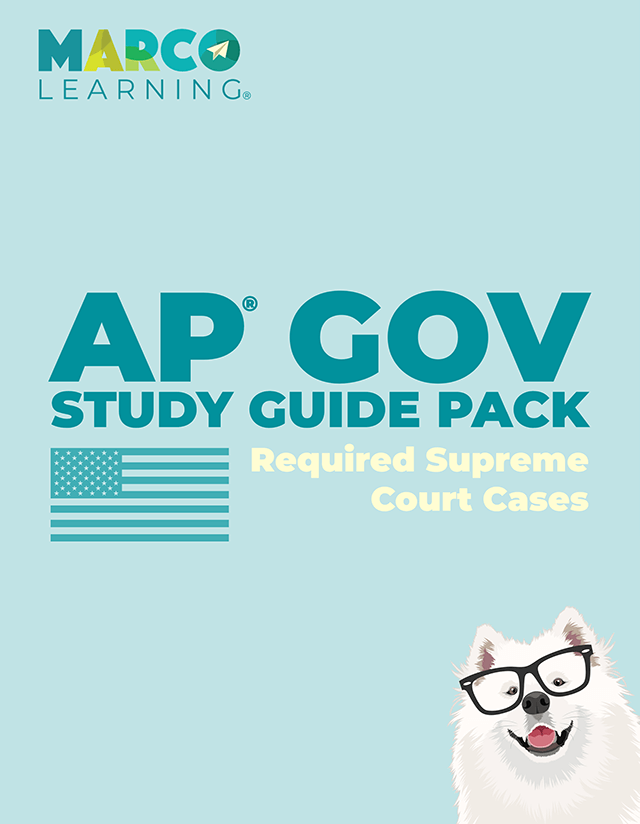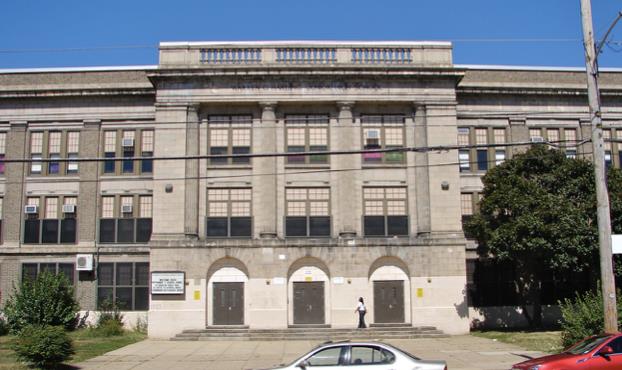


To score well on your AP® U.S. Government and Politics Exam, it is important to become familiar with all of the required Supreme Court cases. In the free-response section of your AP U.S. Government Exam, you will have to answer four essay questions. The third of these questions is a SCOTUS comparison essay, in which you will be required to compare a non-required Supreme Court case with a required Supreme Court case, so get to know each required Supreme Court case as well as possible!
The required Supreme Court cases for the AP U.S. Government and Politics Exam in 2021 are:
Marbury v. Madison (1803)
McCulloch v. Maryland (1819)
Schenck v. the United States (1919)
Brown v. Board of Education (1954)
Engel v. Vitale (1962)
Baker v. Carr (1962)
Gideon v. Wainwright (1963)
Tinker v. Des Moines Independent Community School District (1969)
New York Times Co. v. United States (1971)
Wisconsin v. Yoder (1972)
Roe v. Wade (1973)
Shaw v. Reno (1993)
United States v. Lopez (1995)
McDonald v. Chicago (2010)
Citizens United v. Federal Election Commission (2010)
Tinker v. Des Moines (1969)
Tinker v. Des Moines is one of the required Supreme Court cases for AP U.S. Government and Politics. This case resulted in the landmark decision that established that students may exercise their First Amendment rights in public school as long as their actions do not cause a “substantial disruption.”
FACTS OF THE CASE
In 1965, five students in the Des Moines Independent Community School District wore black armbands to school in order to protect U.S. involvement in the Vietnam War. Prior to planned protest on December 16th, school district officials developed a policy stating that any child wearing an armband to school would be asked to remove it. Failure to do so would result in suspension until the student agreed to come to school without the armband. Mary Beth Tinker, John Tinker, and Christopher Eckhard were suspended from school when they refused to remove their armbands. The younger Tinker children were not suspended because the school district policy did not apply to elementary school students. There was no evidence that the armbands led to violence or disruption at school. The ACLU provided aid to the Tinker family and Christopher Eckhard to appeal to the Supreme Court.

THE DECISION
In a 7-2 Decision, the Court ruled that the armband did not cause a disruption in the school environment and therefore represented an appropriate and constitutionally protected expression of symbolic speech. The ruling substantively expanded the First Amendment rights of students, asserting that students’ rights could only be limited if their actions would “materially and substantively interfere with the requirements of appropriate discipline in the operation of the school.”
IMPACT
The ruling in Tinker v. Des Moines continues to be cited in court cases that seek to either expand or limit the free speech of students on public school grounds. Although the case developed a broad understanding of students’ First Amendment rights, subsequent court decisions have placed limits on the rights of students by ruling that schools could limit speech considered vulgar, likely to cause “substantial disruption,” or “racially hostile,” even if it was not disruptive.
PRECEDENT
Schenck v. United States (1919) argued that First Amendment rights could be limited by the states if the speech posed a “clear and present danger.”
SUBSEQUENT CASE
Bethel School District v. Fraser (1986) – the Burger Court continued to refine the judicial understanding of the limits of the First Amendment by arguing that a public school could punish speech that was considered sexually vulgar.
KEY TERMS
Symbolic Speech In Stromberg v. California (1931) the Supreme Court ruled that “expressive conduct,” such as saluting a flag, could be considered a form of speech covered under the First Amendment even if it is not accompanied by verbal expression or the published word. Some examples of protected symbolic speech include: marching, wearing armbands or clothing, sit-ins, flag burning, and the display of signs.
Clear and Present Danger Test The Clear and Present Danger Test was developed in the judicial opinion for Schenck v. United States (1919) to determine whether free speech could be limited. It established that free speech rights could be curtailed if the exercise of those rights would lead to a “clear and present danger” that the U.S. Government had a right to prevent.
The best way to get better at something is by practicing.
That’s why it’s so important that you take practice tests to help you get better at the AP U.S. Government and Politics Exam. Only then can you expect to get a good score—and even improve your score.
 Help
Help